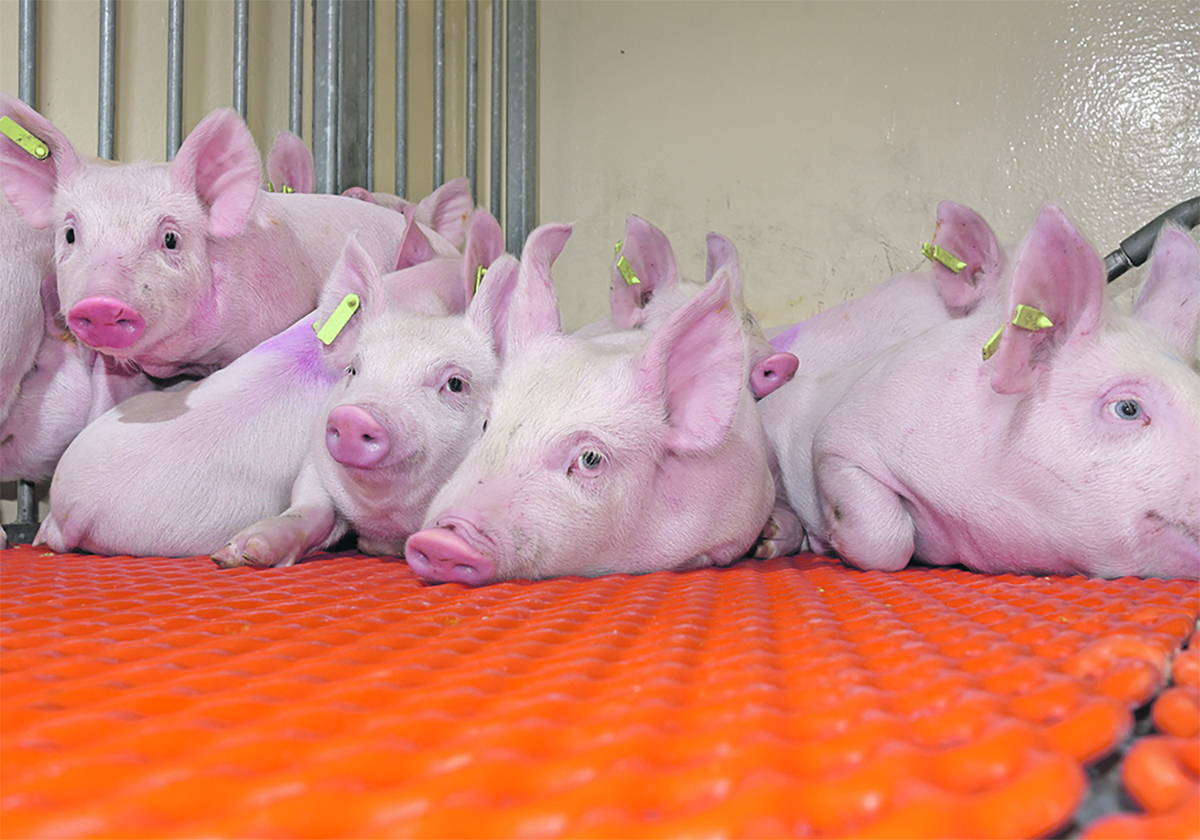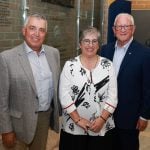PINCHER CREEK, Alta. – When Clarence Cyr delivered his first Parthenais calves, he was disappointed in his new French cattle.
“They looked like Jerseys,” he said.
However, within three weeks the calves were thriving and displayed the heavier muscling the breed is known for in Europe.
Clarence and Helen Cyr run Valley Blue Ranch in the Alberta foothills where they have been raising cattle for 30 years. They brought their first Parthenais to their Pincher Creek ranch about 10 years ago.
“When we first started ranching we weren’t getting what we thought was enough for our calves. We used several different breeds that were every colour of the rainbow. We couldn’t get a fair price for them,” said Clarence.
Read Also

The Western Producer Livestock Report: July 17, 2025
U.S. hogs averaged $106.69 on a carcass basis July 11, down from $110.21 July 4.
He has been an artificial insemination technician for more than 30 years. Working through Universal Genetics at Cardston, Alta., he experimented with various breeds, finding good qualities in all of them. He obtained his first Parthenais embryos in 1992 because no live animals were available.
The Cyrs have 43 fullblood cows and are breeding others up to purebred status. This means a half blood heifer is bred to a fullblood bull to produce a 3/4 Parthenais calf. The next generation is 7/8s and the purebred generation is a 15/16s cross.
Arriving in 1992, these French cattle were among the last of the European imports to North America. They are fawn coloured with a white ring around a black nose. The fullbloods display heavier than average muscling over the shoulders and hips.
Total herd numbers remain small and they are registered with Canadian Livestock Records. There are also some fullblood cattle in Ontario and Cyrs are considering bringing some additional bulls out West to supply local demand.
During the last decade the Cyrs have slowly built up a direct beef sales business to customers as well as to a butcher shop in Trail, B.C. They promote the product as a lean, tender beef carrying the Valley Blue Ranch label.
“It’s a continuous job keeping customers happy and finding new customers. You can’t stand still,” said Clarence.
Word of mouth has been their best form of advertising but the workload is never-ending because the beef is their responsibility from pasture to plate.
They calve twice a year to keep a steady supply. They had to find a reliable slaughter plant, a good butcher to cut and wrap, and a customer base.
They sell some fullblood Parthenais bulls to local cattle producers and buy back the calves at a premium for the beef program.
“After 10 years we think we know everything, but we don’t,” said Helen. “Every year it grows a little more.”
Weaned calves are put on feed at a small feedlot outside of Pincher Creek where the Cyrs can control the feed and time of shipping. The calves are sorted according to weight so each pen can finish more consistently. The finished animals are shipped when they reach 1,150 to 1,200 pounds. Five or six are butchered every week year round to maintain a consistent supply. They sell nearly 400 cattle a year through their program.
The cattle are slaughtered at a federally inspected plant in Fort Macleod and a butcher at Cowley, Alta., cuts, wraps and freezes the meat as well as processes jerky and sausages. The Fort Macleod plant is certified by the European Union so they are able to ship overseas as well, if the opportunity arose.
The Cyrs advise anyone starting a branded beef program to provide a consistent product every time. They also have to find markets for the less than perfect carcasses.
“It’s not for everybody, especially if you are going to follow through from birth to slaughter. It’s a lot of work,” he said.
Another challenge is selling all parts of the beef animal.
The front quarters are made into a soft, moist jerky, hamburgers patties and sausage, while the hindquarters are sold to their customers because most people want the loins.
“It’s a hard balancing act getting the customers and production at the same time,” said Clarence. If they have extra cattle, they deliver them to XL Packers in Calgary.
“Every breed has its own niche. You just have to find that niche,” said Helen.
“Any breed will sell well off the farm as long as you have the market for it. That’s the challenge,” she said.

















